| | Mathison Museum of Natural History |  |
|
+12landrover Kikimalou bmathison1972 Taos widukind Jill Duck-Anch-Amun lucky luke Caracal rogerpgvg Roger Bloodrayne 16 posters |
|
| Author | Message |
|---|
bmathison1972
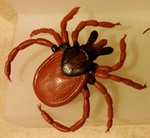
Country/State : Salt Lake City, UT
Age : 52
Joined : 2010-04-13
Posts : 6718
 |  Subject: Re: Mathison Museum of Natural History Subject: Re: Mathison Museum of Natural History  Fri Aug 30, 2024 12:56 pm Fri Aug 30, 2024 12:56 pm | |
| Species: Strix nebulosa Forster, 1772 Common name(s): great grey owl (British); great gray owl (American) About the Figure: Manufacturer: Safari Ltd. Series: Wings of the World Year of Production: 2023 Size/Scale: Scale difficult to calculate due to the pose, but body length approx. 8.0 cm for a scale of 1:7.6-1:10.5 Frequency of species in toy/figure form (at time of posting): Very rare Miscellaneous Notes: This figure replaced the 2010 version by Bullyland in my collection, mainly because of an improvement in color, texture, and facial patterning. Naturalism also produced a nice version in 2021, but their figures can be challenging to find outside of China. About the Animal: Geographic distribution: Holarctic, boreal Habitat: Montane coniferous forests, taiga, mixed-oak woodlands, poplar woodlands; often near tundra barrens, marshes, bogs, meadows, and taiga Diet: Primarily small rodents; also shrews, moles, mustelids, small and medium-sized birds, frogs, large insects IUCN Status (at time of posting): Least Concern Miscellaneous Notes: The large facial disk of S. nebulosa, referred to as a 'ruff', helps focus sound. This, in combination with the asymmetrical placement of their ears, increases their chances of detecting prey in darkness or poor light. Their increased sense of hearing also allows the owl to detect prey moving up to 60 cm beneath snow. This habit of catching prey beneath snow (snow-plunging) is, among owls, unique to S. nebulosa and on occasion other large members of the genus Strix. [You must be registered and logged in to see this image.] |
|
  | |
Kikimalou
Admin
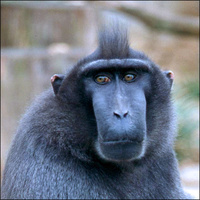
Country/State : Lille, FRANCE
Age : 60
Joined : 2010-04-01
Posts : 21185
 |  Subject: Re: Mathison Museum of Natural History Subject: Re: Mathison Museum of Natural History  Fri Aug 30, 2024 1:43 pm Fri Aug 30, 2024 1:43 pm | |
| I finally got my hands on this owl. I was a bit worried about the face paint but in the end you were right, it's great work. Since they're nearly in the same scale, the Safari ltd will replace the Bullyland. |
|
  | |
widukind
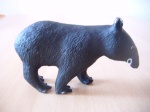
Country/State : Germany
Age : 48
Joined : 2010-12-30
Posts : 45777
 |  Subject: Re: Mathison Museum of Natural History Subject: Re: Mathison Museum of Natural History  Fri Aug 30, 2024 6:54 pm Fri Aug 30, 2024 6:54 pm | |
| |
|
  | |
bmathison1972

Country/State : Salt Lake City, UT
Age : 52
Joined : 2010-04-13
Posts : 6718
 |  Subject: Re: Mathison Museum of Natural History Subject: Re: Mathison Museum of Natural History  Sat Aug 31, 2024 2:30 pm Sat Aug 31, 2024 2:30 pm | |
| Species: † Ceraurinella typa Cooper, 1953 About the Figure: Manufacturer: Kaiyodo Series: The Study Room Year of Production: 2004 Size/Scale: Base 6.5 cm long. Body length (excl. appendages) approx. 4.5. Using pygidium as a metric (n=1.5 cm), scale comes to approx. 2.5:1 Frequency of species in toy/figure form (at time of posting): Unique Miscellaneous Notes: The figure is made of resin and the trilobite is permanently affixed to its base. About the Animal: Geographic distribution: Middle Ordovician of present-day Canada Habitat: Marine, benthic Diet: Presumably scavenger or predator on soft-bodied benthic invertebrates IUCN Status (at time of posting): N/A [prehistoric] Miscellaneous Notes: I had difficulty finding information on this species, including helpful metrics to calculate its scale. [You must be registered and logged in to see this image.] |
|
  | |
bmathison1972

Country/State : Salt Lake City, UT
Age : 52
Joined : 2010-04-13
Posts : 6718
 |  Subject: Re: Mathison Museum of Natural History Subject: Re: Mathison Museum of Natural History  Sun Sep 01, 2024 12:59 pm Sun Sep 01, 2024 12:59 pm | |
| Species: Grylloblatta sp. Common name(s): ice crawler; ice insect; rock crawler About the Figure: Manufacturer: K&M International Series: Wild Republic - Insects Nature Tube Year of Production: unknown Size/Scale: Body length (excl. appendages) approx. 6.0 cm for a scale of 4:1-2:1 depending on the species Frequency of species in toy/figure form (at time of posting): Rare (unique as a sculpt, see below) Miscellaneous Notes: This is a mysterious figure with a mysterious pedigree I haven't quite figured out. First of all, the identification is my own. While not perfect for a grylloblattid, I cannot find a better match. I cannot tell if the inner paired structures at the posterior end are an extra pair of cerci (which isn't really correct for anything) or an exaggerated split ovipositor (which would lend more support for a grylloblattid). I have seen eBay dealers selling the figure (or a slight variation of the sculpt) as an earwig (Dermaptera), but it looks even less like an earwig. This K&M figure came out in the early 2000s, but it is probably not the original. I have seen, and previously owned, the sculpt (or slight variations of it) from a few dollar store/bin sets. Most of the sculpts in K&M's Insects Nature Tube can be found in generic insect sets as they probably partnered with a Chinese company that made sculpts for multiple distributors (some of the same sculpts can be found in Safari Ltd.'s original Insects TOOB, for example). Regardless, this is the only figure I retained from K&M's tube, because of its uniqueness as a grylloblattid. About the Animal: Geographic distribution: Northwestern USA and western Canada Habitat: High-altitude and high-latitude ice caves and glaciers Diet: Predator of soft-bodied invertebrates and scavenger on insects that have died on, or been wind blown onto, ice and snow IUCN Status (at time of posting): N/A [no species have been accessed by the IUCN] Miscellaneous Notes: Grylloblattids are cold-active animals. They are mostly nocturnal or active during the day when the temperatures are below freezing, feeding on organisms such as collembolans (springtails) or insects that fall on the ice and snow and die or wind blown onto the ice and snow. [You must be registered and logged in to see this image.] |
|
  | |
widukind

Country/State : Germany
Age : 48
Joined : 2010-12-30
Posts : 45777
 |  Subject: Re: Mathison Museum of Natural History Subject: Re: Mathison Museum of Natural History  Sun Sep 01, 2024 5:02 pm Sun Sep 01, 2024 5:02 pm | |
| |
|
  | |
bmathison1972

Country/State : Salt Lake City, UT
Age : 52
Joined : 2010-04-13
Posts : 6718
 |  Subject: Re: Mathison Museum of Natural History Subject: Re: Mathison Museum of Natural History  Mon Sep 02, 2024 1:47 pm Mon Sep 02, 2024 1:47 pm | |
| Species: Eupatorus birmanicus Arrow, 1908 Common name(s): rabbit beetle About the Figure: Manufacturer: Bandai Series: Diversity of Life on Earth - Beetles Vol. 5 Year of Production: 2023 Size/Scale: Body approx. 6.5 cm for a scale of 1.3:1-1.1:1 (slightly over 1:1 for a large major male; see below) Frequency of species in toy/figure form (at time of posting): Very rare Miscellaneous Notes: This is the second time we've seen E. birmanicus in the Museum. The last time, back in December of 2020 (in the very earliest days of this thread), it was a figure by DeAgostini which at the time was unique for the species. Today's model by Bandai is large and requires assembly. I had difficulty finding metrics to calculate a scale and the above scale is based on a range of 4.8-6.0 cm, which is based on measurements of specimens available for sale online. About the Animal: Geographic distribution: Southeast Asia (Myanmar and Thailand) Habitat: Rainforests Diet: Unknown. Presumably, larvae feed in rotting logs or in organic detritus in soil; adults, if they feed, are probably attracted to sap flows or overripe fruit. IUCN Status (at time of posting): Not Evaluated Miscellaneous Notes: Breeders and collectors often refer to this species as 'rabbit beetle' or 'rabbit ear beetle' because of the two upright pronotal horns that looks somewhat like rabbit ears. The species is sexually dimorphic, and only males possess these 'rabbit ears'. [You must be registered and logged in to see this image.] |
|
  | |
widukind

Country/State : Germany
Age : 48
Joined : 2010-12-30
Posts : 45777
 |  Subject: Re: Mathison Museum of Natural History Subject: Re: Mathison Museum of Natural History  Mon Sep 02, 2024 5:56 pm Mon Sep 02, 2024 5:56 pm | |
| |
|
  | |
bmathison1972

Country/State : Salt Lake City, UT
Age : 52
Joined : 2010-04-13
Posts : 6718
 |  Subject: Re: Mathison Museum of Natural History Subject: Re: Mathison Museum of Natural History  Tue Sep 03, 2024 12:40 pm Tue Sep 03, 2024 12:40 pm | |
| Species: Pachygrapsus crassipes Randall, 1840 Common name(s): striped shore crab; lined shore crab About the Figure: Manufacturer: Play Visions Series: Habitat Earth - Crabs Year of Production: 1996 Size/Scale: Carapace width approx. 1.3 cm for a scale of 1:3.1-1:3.7 Frequency of species in toy/figure form (at time of posting): Unique (as a sculpt, see below) Miscellaneous Notes: Several of Play Visions' crabs have been copied or used by other distributors, most notably PEC; I cannot remember whether or not this was one of them. About the Animal: Geographic distribution: Pacific Coast of North America, from British Columbia to Baja California with a disjunct population in the Korean Peninsula and Japan Habitat: Rocky shores, tide pools; usually in the high and mid-intertidal ranges Diet: Green algae, brown seaweed, marine invertebrates, carrion; cannibalism not uncommon IUCN Status (at time of posting): Not Evaluated Miscellaneous Notes: Pachygrapsus crassipes has an interesting distribution pattern. The main population occurs on rocky coasts of western North America, from Oregon to Baja California. The small population on Vancouver Island is believed to be disjunct, although it doesn't seem to be affected by founder effect (when a small group from a larger population establishes a new population and loses genetic diversity). The population on Vancouver Island also appears to be shrinking and it is unsure if it ever will become a permanent resident on the island. More interesting is the population around the Korean Peninsula and Japan. It was always assumed the population was introduced, presumably accidentally, from larval crabs hitching a ride on ships. However, genetic evidence suggests the migration to northeastern Asia occurred during the Late Pleistocene, long before humans had marine transport. One theory is that fluctuating sea levels during the Pleistocene, some of which may have been 120-140 meters lower than they are today, may have revealed terrains that would have allowed the crabs to easily disperse north and westward. Another theory is, of course, the use of natural rafts (e.g. tree branches) as vehicles for larval transport. [You must be registered and logged in to see this image.] |
|
  | |
widukind

Country/State : Germany
Age : 48
Joined : 2010-12-30
Posts : 45777
 |  Subject: Re: Mathison Museum of Natural History Subject: Re: Mathison Museum of Natural History  Tue Sep 03, 2024 6:02 pm Tue Sep 03, 2024 6:02 pm | |
| |
|
  | |
bmathison1972

Country/State : Salt Lake City, UT
Age : 52
Joined : 2010-04-13
Posts : 6718
 |  Subject: Re: Mathison Museum of Natural History Subject: Re: Mathison Museum of Natural History  Wed Sep 04, 2024 12:45 pm Wed Sep 04, 2024 12:45 pm | |
| Species: Mecynorhina ugandensis Moser, 1907 About the Figure: Manufacturer: Stasto Series: 3D File - Ladybugs & Cetoniines Year of Production: 2022 Size/Scale: Body length (including cephalic horn) approx. 7.2 cm, within scale 1:1 Frequency of species in toy/figure form (at time of posting): Very rare Miscellaneous Notes: The Stasto 3D File figures have an ingenious design for distribution that minimizes packaging. There are eight figures in a collection. Two figures come connected to form their own gashapon capsule. The two figures are separated by gently twisting them. Once apart, the bottom of the figure extends, revealing the legs and antennae. The legs and antennae are extended and placed in the desired position and then the body is closed back up, revealing the final product. I reviewed one of their products on the Animal Toy Blog here. About the Animal: Geographic distribution: Central Africa (Uganda, DRC) Habitat: Tropical rainforest Diet: Larvae feed in rotting wood or compost; adults are attracted to sap and overripe fruit IUCN Status (at time of posting): Not Evaluated Miscellaneous Notes: Mecynorhina ugandensis is in the subgenus Mecynorrhinella along with M. oberthueri and M. torquata and is often considered a subspecies of the latter. [You must be registered and logged in to see this image.] |
|
  | |
widukind

Country/State : Germany
Age : 48
Joined : 2010-12-30
Posts : 45777
 |  Subject: Re: Mathison Museum of Natural History Subject: Re: Mathison Museum of Natural History  Wed Sep 04, 2024 5:39 pm Wed Sep 04, 2024 5:39 pm | |
| |
|
  | |
rogerpgvg
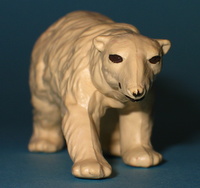
Country/State : UK
Age : 54
Joined : 2016-04-29
Posts : 3897
 |  Subject: Re: Mathison Museum of Natural History Subject: Re: Mathison Museum of Natural History  Thu Sep 05, 2024 10:38 am Thu Sep 05, 2024 10:38 am | |
| Great packaging. Nice that they come in two colours. |
|
  | |
bmathison1972

Country/State : Salt Lake City, UT
Age : 52
Joined : 2010-04-13
Posts : 6718
 |  Subject: Re: Mathison Museum of Natural History Subject: Re: Mathison Museum of Natural History  Thu Sep 05, 2024 12:28 pm Thu Sep 05, 2024 12:28 pm | |
| Species: † Anomalocaris canadensis Whiteaves, 1892 About the Figure: Manufacturer: Takara Tomy A.R.T.S. Series: The Great Old Sea Year of Production: 2020 Size/Scale: Body length (excl. appendages) approx. 9.5 cm for a scale of 1:3.6-1:4 Frequency of species in toy/figure form (at time of posting): Uncommon Miscellaneous Notes: This is the fourth time we've seen A. canadensis in the Museum. Minimal assembly is required and the final product has some articulations. Interestingly, this is one of the most accurate representations of this species available! The Great Old Sea collection, or variations of it, are released almost annually and an Anomalocaris was also released in 2022 (and possibly again since then, I've lost track). I am not sure whether or not it is the same sculpt with a repaint, but I wouldn't be surprised if it was. About the Animal: Geographic distribution: Early to mid-Cambrian of present-day Canada Habitat: Marine, pelagic Diet: Presumably soft-bodied marine invertebrates IUCN Status (at time of posting): N/A [prehistoric] Miscellaneous Notes: Anomalocaris canadensis is believed to have been a pelagic predator. It moved through the water column by undulating the flexible flaps along the side of its body. With each flap slightly sloped below the next one posterior to it, it allowed the line of flaps to function as a single long lateral fin, maximizing efficiency. Model reconstructions show this mode of swimming to be intrinsically stable. [You must be registered and logged in to see this image.] |
|
  | |
widukind

Country/State : Germany
Age : 48
Joined : 2010-12-30
Posts : 45777
 |  Subject: Re: Mathison Museum of Natural History Subject: Re: Mathison Museum of Natural History  Thu Sep 05, 2024 6:10 pm Thu Sep 05, 2024 6:10 pm | |
| |
|
  | |
bmathison1972

Country/State : Salt Lake City, UT
Age : 52
Joined : 2010-04-13
Posts : 6718
 |  Subject: Re: Mathison Museum of Natural History Subject: Re: Mathison Museum of Natural History  Fri Sep 06, 2024 2:11 pm Fri Sep 06, 2024 2:11 pm | |
| Species: † Lingwulong shenqi Xu et al., 2018 About the Figure: Manufacturer: PNSO Series: Prehistoric Animal Models Year of Production: 2022 Size/Scale: Total figure length approx. 49.0 cm. Using front right tibia as a metric (n=3.0 cm) scale comes to approx. 1:37.5 (see below) Frequency of species in toy/figure form (at time of posting): Unique Miscellaneous Notes: The scale above is calculated based on the front right tibia using the illustration in the original description. The species was described from individuals of different developmental stages so the scale above, assuming I did it right to begin with, should be taken with caution. It's probably fine for the advertised scale of 1:35. About the Animal: Geographic distribution: Early to Middle Jurassic (late Toarcian-Bajocian) of present-day East Asia Habitat: Open coniferous and fern woodlands and adjacent riparian areas Diet: Plants IUCN Status (at time of posting): N/A [prehistoric] Miscellaneous Notes: Lingwulong shenqi is believed to be one of the oldest known diplocodoids. It is currently placed basal in the family Dicraeosauridae and split from a shared ancestor with Dicraeosaurus and Amargasaurus in the late Toarcian (Jurassic) roughly 174 MYA. [You must be registered and logged in to see this image.] |
|
  | |
widukind

Country/State : Germany
Age : 48
Joined : 2010-12-30
Posts : 45777
 |  Subject: Re: Mathison Museum of Natural History Subject: Re: Mathison Museum of Natural History  Fri Sep 06, 2024 10:34 pm Fri Sep 06, 2024 10:34 pm | |
| |
|
  | |
bmathison1972

Country/State : Salt Lake City, UT
Age : 52
Joined : 2010-04-13
Posts : 6718
 |  Subject: Re: Mathison Museum of Natural History Subject: Re: Mathison Museum of Natural History  Sat Sep 07, 2024 1:51 pm Sat Sep 07, 2024 1:51 pm | |
| Species: Conraua goliath (Boulenger, 1906) Common name(s): goliath frog; goliath bullfrog; giant slippery frog About the Figure: Manufacturer: Kaiyodo Series: Red Data Animals Year of Production: 2004 Size/Scale: Snout-to-vent length (SVL) approx. 4.2 cm for a scale of 1:3.4-1:7.6 Frequency of species in toy/figure form (at time of posting): Unique Miscellaneous Notes: The frog comes with a habitat-style base that it sits loosely on (see inset). The base didn't really work with the diorama I wanted to photograph the figure in, so I chose to do it as an inset. About the Animal: Geographic distribution: Central Africa (Cameroon, Equatorial Guinea) Habitat: Lowland rainforest, usually associated with rivers and waterfalls with rich, clean, and slightly acidic water Diet: Tadpoles are specialists on the aquatic plant Dicraea warmingii; adults feed on insects, crustaceans, mollusks, and other amphibians IUCN Status (at time of posting): Endangered Miscellaneous Notes: Conraua goliath is the largest extant frog in the world, with some individuals reaching weights of 3.3 kg and having an SVL of up to 32 cm. [You must be registered and logged in to see this image.] |
|
  | |
Kikimalou
Admin

Country/State : Lille, FRANCE
Age : 60
Joined : 2010-04-01
Posts : 21185
 |  Subject: Re: Mathison Museum of Natural History Subject: Re: Mathison Museum of Natural History  Sat Sep 07, 2024 2:04 pm Sat Sep 07, 2024 2:04 pm | |
| Well  Mine is on the 1/8 floor as a big Goliath frog. |
|
  | |
bmathison1972

Country/State : Salt Lake City, UT
Age : 52
Joined : 2010-04-13
Posts : 6718
 | |
  | |
widukind

Country/State : Germany
Age : 48
Joined : 2010-12-30
Posts : 45777
 |  Subject: Re: Mathison Museum of Natural History Subject: Re: Mathison Museum of Natural History  Sun Sep 08, 2024 11:48 am Sun Sep 08, 2024 11:48 am | |
| |
|
  | |
bmathison1972

Country/State : Salt Lake City, UT
Age : 52
Joined : 2010-04-13
Posts : 6718
 |  Subject: Re: Mathison Museum of Natural History Subject: Re: Mathison Museum of Natural History  Sun Sep 08, 2024 1:54 pm Sun Sep 08, 2024 1:54 pm | |
| Species: Golofa porteri Hope, 1837 About the Figure: Manufacturer: Sega Series: Mushi King - small series, DX Year of Production: unknown Size/Scale: Body length (excl. cephalic horn) approx. 3.4 cm. Front femur approx. 0.7 cm for a scale of 1:3.4 (see below) Frequency of species in toy/figure form (at time of posting): Very rare Miscellaneous Notes: This is the second time we've seen G. porteri in the Museum. I had difficulty researching information on the metrics of this species. One website indicates the length is 5-10 cm, but I do not know if that includes the cephalic horn or not. A published study describing an example of teratology in G. porteri indicates the length of a normal front femur is 2.4 cm. About the Animal: Geographic distribution: Central America and northern South America, from Guatemala to Venezuela Habitat: Tropical and subtropical rainforest Diet: Larvae develop in rotting wood; adults have been documented feeding on Chusquea (South American bamboo) IUCN Status (at time of posting): Not Evaluated Miscellaneous Notes: I had difficulty researching information on this species. In Colombia, adults have been observed feeding and mating on Chusquea. Males use their elongated pronotal and cephalic horns in combat to secure feeding sites and mates. [You must be registered and logged in to see this image.] |
|
  | |
widukind

Country/State : Germany
Age : 48
Joined : 2010-12-30
Posts : 45777
 |  Subject: Re: Mathison Museum of Natural History Subject: Re: Mathison Museum of Natural History  Sun Sep 08, 2024 2:15 pm Sun Sep 08, 2024 2:15 pm | |
| |
|
  | |
landrover
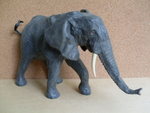
Country/State : colombia
Age : 66
Joined : 2010-11-04
Posts : 5897
 |  Subject: Re: Mathison Museum of Natural History Subject: Re: Mathison Museum of Natural History  Sun Sep 08, 2024 7:36 pm Sun Sep 08, 2024 7:36 pm | |
| - bmathison1972 wrote:
- Species: †Lingwulong shenqi Xu et al., 2018
About the Figure:
Manufacturer: PNSO
Series: Prehistoric Animal Models
Year of Production: 2022
Size/Scale: Total figure length approx. 49.0 cm. Using front right tibia as a metric (n=3.0 cm) scale comes to approx. 1:37.5 (see below)
Frequency of species in toy/figure form (at time of posting): Unique
Miscellaneous Notes: The scale above is calculated based on the front right tibia using the illustration in the original description. The species was described from individuals of different developmental stages so the scale above, assuming I did it right to begin with, should be taken with caution. It's probably fine for the advertised scale of 1:35.
About the Animal:
Geographic distribution: Early to Middle Jurassic (late Toarcian-Bajocian) of present-day East Asia
Habitat: Open coniferous and fern woodlands and adjacent riparian areas
Diet: Plants
IUCN Status (at time of posting): N/A [prehistoric]
Miscellaneous Notes: Lingwulong shenqi is believed to be one of the oldest known diplocodoids. It is currently placed basal in the family Dicraeosauridae and split from a shared ancestor with Dicraeosaurus and Amargasaurus in the late Toarcian (Jurassic) roughly 174 MYA.
[You must be registered and logged in to see this image.]
WOW, this prehistoric figure is really interesting. Big congratulations. |
|
  | |
bmathison1972

Country/State : Salt Lake City, UT
Age : 52
Joined : 2010-04-13
Posts : 6718
 |  Subject: Re: Mathison Museum of Natural History Subject: Re: Mathison Museum of Natural History  Mon Sep 09, 2024 1:25 pm Mon Sep 09, 2024 1:25 pm | |
| Species: Bubo bubo (Linnaeus, 1758) Common name(s): Eurasian eagle-owl; UhuAbout the Figure: Manufacturer: Safari Ltd. Series: Wings of the World Year of Production: 2020 Size/Scale: Scale extremely difficult to measure due to the posture, but the body length (including tail feathers as presented here) comes to approx. 10.0 cm for a scale of 1:5.6-1:7.5. Other potential metrics (total bill length, tarsus) are not fully exposed to use reliably. Frequency of species in toy/figure form (at time of posting): Uncommon Miscellaneous Notes: Probably considered one of the best examples of this species outside of Japan, it may get some competition when Papo releases one later this year. About the Animal: Geographic distribution: Eurasia Habitat: Highly variable, including coniferous and mixed forests, mountain ranges, riverbeds, deserts, grasslands, farmland; often around rocky landscapes, especially when breeding Diet: Primarily small mammals, but also birds, reptiles, amphibians, fish, and large insects and other invertebrates IUCN Status (at time of posting): Least Concern Miscellaneous Notes: Bubo bubo essentially fills the same ecological role as the great horned owl ( B. virginianus) in the New World. The great horned owl and the snowy owl ( B. scandiacus) are probably sister taxa and split from a common ancestor a little more than 4 MYA. The great horned and snowy owls split from the B. bubo complex in the Old World after colonizing the Americas and becoming isolated during the Pleistocene glacial cycles. [You must be registered and logged in to see this image.] |
|
  | |
Sponsored content
 |  Subject: Re: Mathison Museum of Natural History Subject: Re: Mathison Museum of Natural History  | |
| |
|
  | |
| | Mathison Museum of Natural History |  |
|
